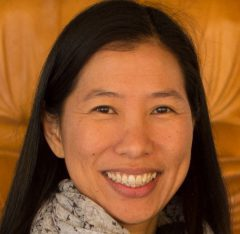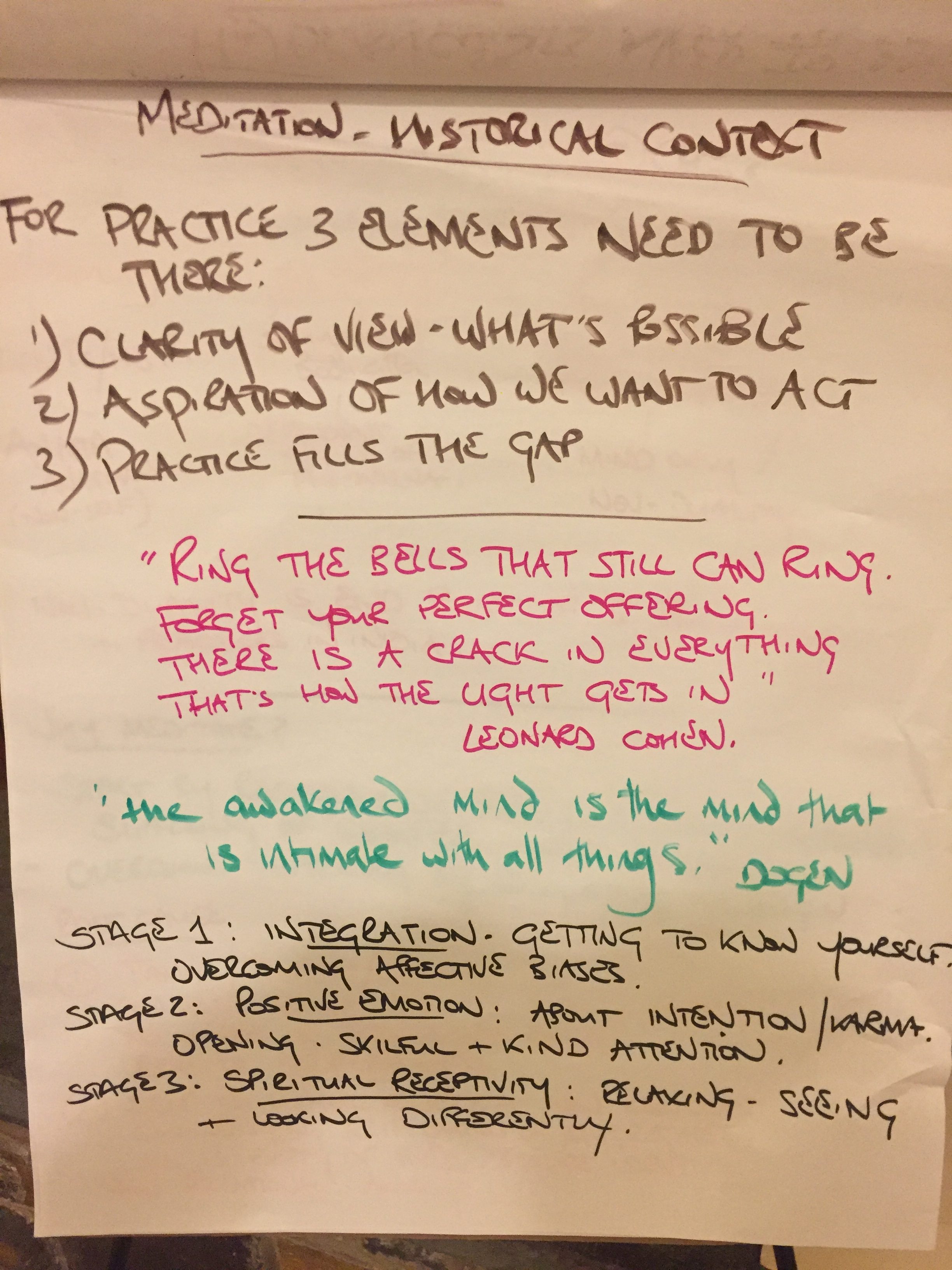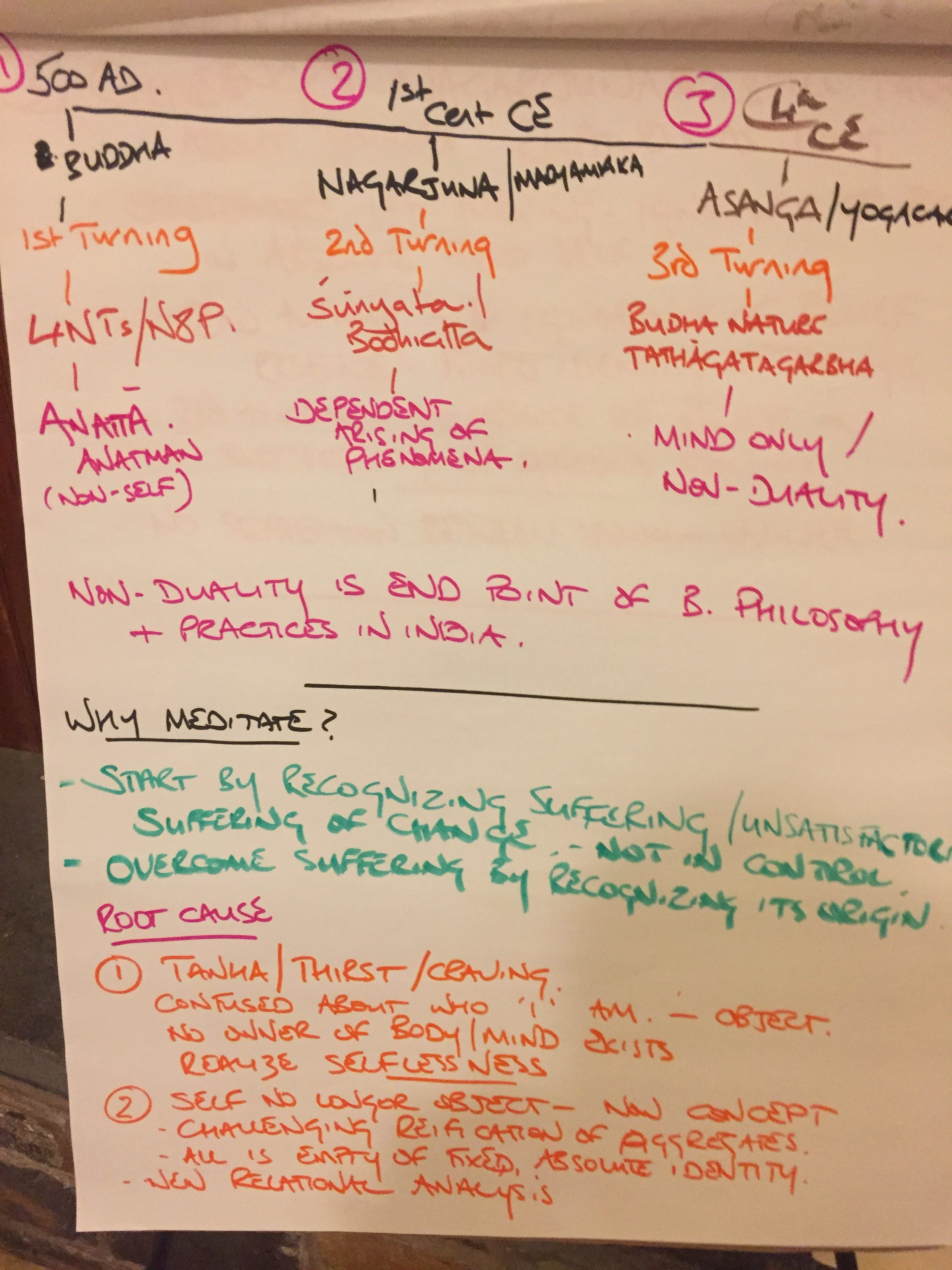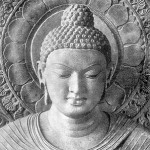 Padma Dharini has been leading a series on the wisdom factors.
Padma Dharini has been leading a series on the wisdom factors.
Enjoy the audios below! (The first 2 recordings were started 5-10 minutes into the talk)
The Audio from July 9, 2018 below:
Also we have audio for other weeks:
Supplemental material: By chance, I listened to a guided meditation from Rob Burbea today(July 24, 2018). It’s quite complimentary to the material covered last night.
The audio is a talk from the first week of a 4-week retreat he did on emptiness at the Gaia House in the UK. The title is “Guided Meditation: Three Characteristics” http://dharmaseed.org/talks/audio_player/210/9543.html
Per the title, the meditation begins looking at Impermanence where, after establishing a concentrated state, he begins to try & tune you into observing change. At about the mid-way point, Rob instructs you to examine any experiences of unpleasantness (dukkha) that may be arising, such as clinging or aversion. He guides you in a way that is quite simple and clever, at least it was for me. It also made me think of Marc’s comment last night about aversion being the opposite side of the coin to clinging.
Following this he explores Anatta, this idea of disconnecting from the sensations and phenomena that is arising in us. He calls it unhooking the I.
For me, the sensation that was arising & has been quite a bit lately is this discomfort in my lower back. Although I often realize it’s just discomfort & I shouldn’t make more of it, I still fall prey. This guided meditation helped me work through the sensation of discomfort and disconnect the “me-ness” in the discomfort. This is all still pretty new to me but I got a lot out of this meditation & thought I’d share it with the rest of you since we’ve all been learning this approach–to be able to see things as not self.

 The practice of Mindful Eating
The practice of Mindful Eating

 Rebecca began practicing in 1995, and attended her first seven-day intensive retreat with Chan Master Sheng Yen, founder of Dharma Drum Retreat Center (DDRC), in the following year. Since then she has attended numerous intensive Chan retreats. In 1999 after moving to New Jersey she began translating for Master Sheng Yen. In the same year, she began her training with the Master to become a Dharma and meditation instructor. Currently, she teaches meditation and Dharma classes and gives public lectures at the Chan Meditation Center (CMC) and leads 1- to 3-day retreats at CMC & DDRC. She has been training with Simon Child since 2008 to conduct retreat interviews and has been assisting in his intensive retreats since 2012. Along with her husband David Slaymaker, Rebecca leads Chan practice at Rutgers University and the New Jersey chapter of DDMBA and teaches on behalf of Dharma Drum in various community activities in the NJ-NY area. Rebecca is a board member of the Dharma Drum Retreat Center and professor of sociology at The College of New Jersey.
Rebecca began practicing in 1995, and attended her first seven-day intensive retreat with Chan Master Sheng Yen, founder of Dharma Drum Retreat Center (DDRC), in the following year. Since then she has attended numerous intensive Chan retreats. In 1999 after moving to New Jersey she began translating for Master Sheng Yen. In the same year, she began her training with the Master to become a Dharma and meditation instructor. Currently, she teaches meditation and Dharma classes and gives public lectures at the Chan Meditation Center (CMC) and leads 1- to 3-day retreats at CMC & DDRC. She has been training with Simon Child since 2008 to conduct retreat interviews and has been assisting in his intensive retreats since 2012. Along with her husband David Slaymaker, Rebecca leads Chan practice at Rutgers University and the New Jersey chapter of DDMBA and teaches on behalf of Dharma Drum in various community activities in the NJ-NY area. Rebecca is a board member of the Dharma Drum Retreat Center and professor of sociology at The College of New Jersey.


 We were delighted to have George Haas back to the Yardley Friends Meetinghouse on Monday, March 12th. One of our sangha member’s comment captures the visit quite well–“George, you make me feel smarter when you come here.”
We were delighted to have George Haas back to the Yardley Friends Meetinghouse on Monday, March 12th. One of our sangha member’s comment captures the visit quite well–“George, you make me feel smarter when you come here.”



